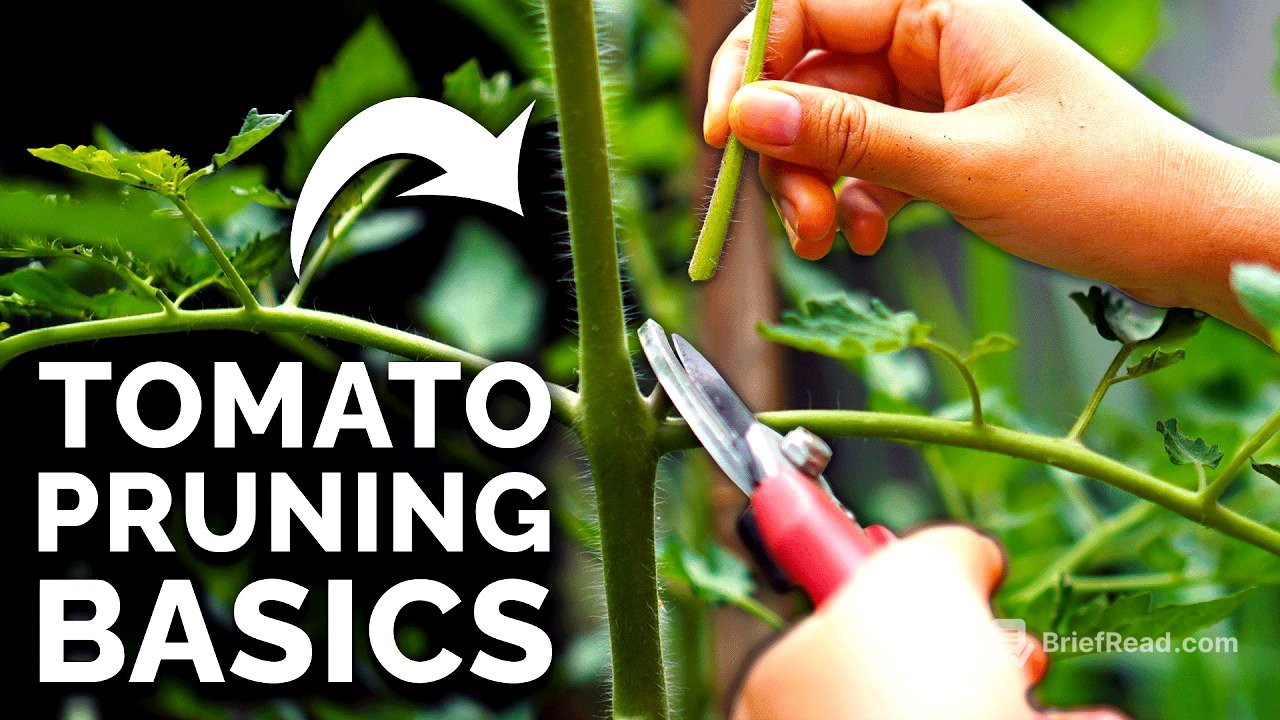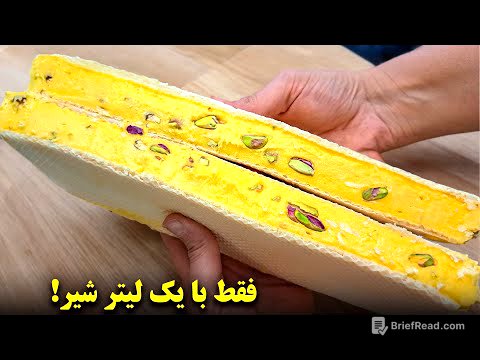TLDR;
This video provides a comprehensive guide on pruning tomatoes, explaining the reasons for pruning, differentiating between determinate and indeterminate tomato types, and detailing specific pruning strategies for each. It also covers tomato anatomy, sucker identification, cloning from suckers, and topping at the end of the season.
- Pruning increases airflow, reduces disease risk, and allows for interplanting.
- Determinate tomatoes require minimal pruning below the first flower bud.
- Indeterminate tomatoes offer multiple pruning options, including single, double, or triple leader systems.
- Suckers can be cloned to create new tomato plants.
- Topping at the end of the season redirects the plant's energy into fruit maturation.
Introduction [0:00]
The video introduces the topic of tomato pruning, emphasizing that there isn't a single "best" method due to the variety of tomato types and growing conditions. The goal is to provide viewers with a deeper understanding of tomato pruning, considering different tomato types and their impact on pruning strategies. The video also promises to cover end-of-season pruning techniques.
Why Prune Tomatoes? [1:10]
Pruning tomatoes is beneficial because it increases airflow within the plant, which reduces the risk of diseases like early blight and Septoria leaf spot that thrive in humid conditions. Removing unproductive, shaded leaves allows the plant to focus energy on fruit production. Pruning the lower branches also creates space for interplanting and prevents soil-borne diseases from affecting the plant.
Determinate vs. Indeterminate Tomatoes [2:30]
The video explains the difference between determinate and indeterminate tomatoes. Determinate tomatoes have a determined height and lifespan, typically reaching four to five feet, and their final bud is a flower bud, meaning they stop growing. They are suitable for short growing seasons and compact spaces, as their fruit ripens around the same time. Indeterminate tomatoes, on the other hand, continue to grow until the season ends, making them ideal for longer growing seasons and larger spaces. Dwarf indeterminate tomatoes are also mentioned, which have a compact growth habit but are technically indeterminate.
Tomato Anatomy Basics [4:14]
Understanding tomato anatomy is crucial for effective pruning. The main stem is the primary vertical stalk of the plant. Leaves, also known as sun leaves, are responsible for producing energy. Flower buds develop into tomato fruits. Suckers grow at a 45-degree angle between the main stem and a leaf node and can develop into new stems with leaves and flower buds.
Pruning Determinate Tomatoes [5:45]
Pruning determinate tomatoes is straightforward. Identify the first flower bud on the plant and remove all suckers below it. This helps to clean up the undercanopy and direct the plant's energy towards fruit production above the flower node. Young suckers can be pinched off with fingers, while larger ones should be cut with sterilized shears. Avoid cutting anything above the first flower node to prevent reducing fruit yield.
Pruning Indeterminate Tomatoes [7:21]
Indeterminate tomatoes offer more pruning options depending on the desired growth habit. While they can be left to sprawl, it's generally recommended to prune them for better airflow and disease prevention. Indeterminate tomatoes can be pruned to a single leader (one main stem), a double leader (two main stems), or even a triple leader. To prune, remove the lower growth and select the desired number of main stems, removing the other suckers. Regular inspection is necessary to prevent suckers from creating more suckers.
Cloning Tomato Suckers [11:20]
Tomato suckers can be used to clone new tomato plants. If the suckers are healthy and disease-free, they can be propagated in soil. Remove the lower leaves from the sucker, bury the stem in soil up to the remaining leaves, and the buried stem will develop roots, creating a new tomato plant. This is possible because tomato stems have totipotency, the ability to produce roots along the entire stem.
End-of-Season Pruning: Topping [12:18]
At the end of the growing season, when the weather is about to kill the plant, indeterminate tomatoes should be topped. Topping involves removing the top tip of growth, which stops the plant from producing more vegetative growth and redirects its energy into maturing the existing fruits. This ensures that the remaining tomatoes ripen before the end of the season.









